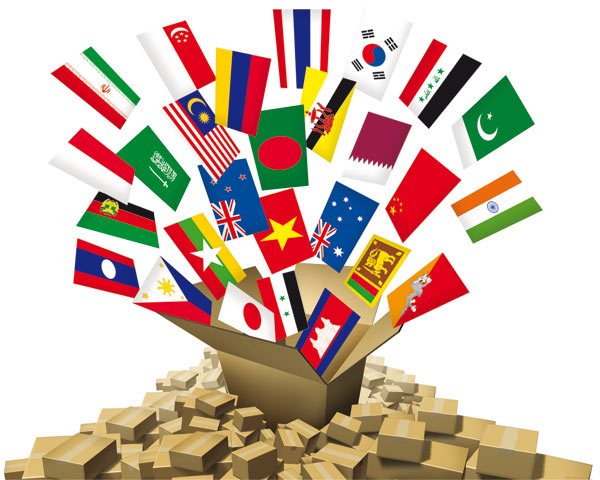

Efforts made to remove export, import barriers as Asia's intra-regional commerce evolves
 |
Tucked away in a corner of Malaysia is the sultanate of Brunei Darussalam, a tiny country along 161 km of coast with just 415,000 people who enjoy some of the highest standards of living in the region.
Thanks to plentiful oil and gas, Brunei has the second-highest per capita GDP among the 10 countries of the Association of Southeast Asian Nations (ASEAN).
But Brunei has a problem. The oil and gas that make the country rich account for two-thirds of its economic output. That is ultimately not sustainable, as the Brunei Economic Development Board points out in its latest vision statement for the country.
Instead, Brunei is looking to increase trade with its neighbors to both diversify and build a more stable foundation.
With global demand still slack, many Asian economies such as Brunei are counting on intra-regional trade, powered by greater domestic demand, to sustain and drive economic growth.
ASEAN's experience is a case in point. The bloc's intra-regional trade and trade with China now accounts for about 37 percent of its total, up from 26 percent in 2000. On the other hand, the proportion of ASEAN's trade with the US has fallen from 20 percent in 2000 to 10 percent in 2011 while trade with Europe has dropped from 15 percent to 11 percent.
Freer trade, at least for the foreseeable future, is likely to happen on a regional basis. "Any move to create free trade is always positive," says Matthew Circosta, an economist at Moody's Analytics. "There are certainly some political tensions… (but) in the longer term, it will certainly create growth."
With the Doha Round of World Trade Organization (WTO) negotiations all but stalled and a resurgence of protectionism in the wake of the global financial crisis of 2008, it has been left to partners and neighbors to lower barriers to trade by creating regional blocs. Nowhere are these trade blocs more visible than in Asia.
 World's first 1-liter car debuts in Beijing
World's first 1-liter car debuts in Beijing
 Paper-made furniture lights up art show
Paper-made furniture lights up art show
 Robots kick off football match in Hefei
Robots kick off football match in Hefei
 Aerobatic team prepare for Aviation Convention
Aerobatic team prepare for Aviation Convention
 China Suzhou Electronic Manufacturer Exposition kicks off
China Suzhou Electronic Manufacturer Exposition kicks off
 'Squid beauty' and her profitable BBQ store
'Squid beauty' and her profitable BBQ store
 A day in the life of a car model
A day in the life of a car model
 Vintage cars gather in downtown Beijing
Vintage cars gather in downtown Beijing